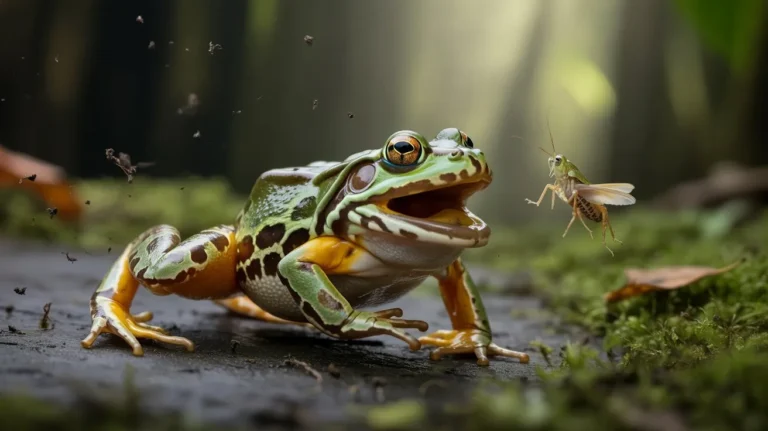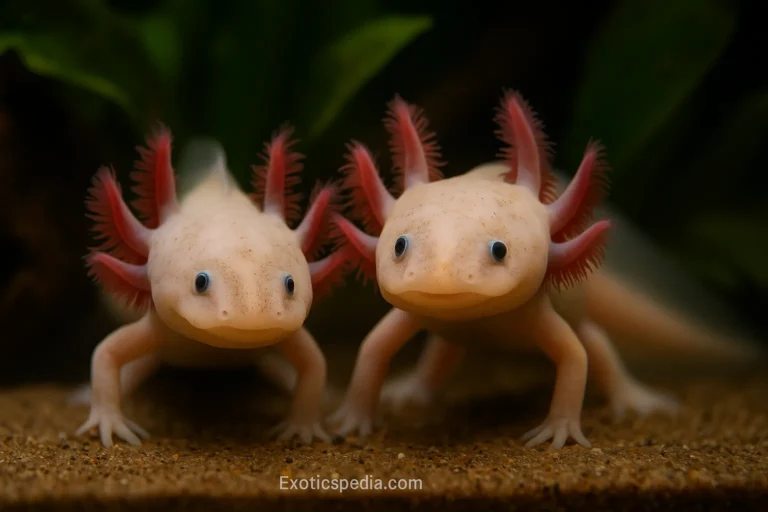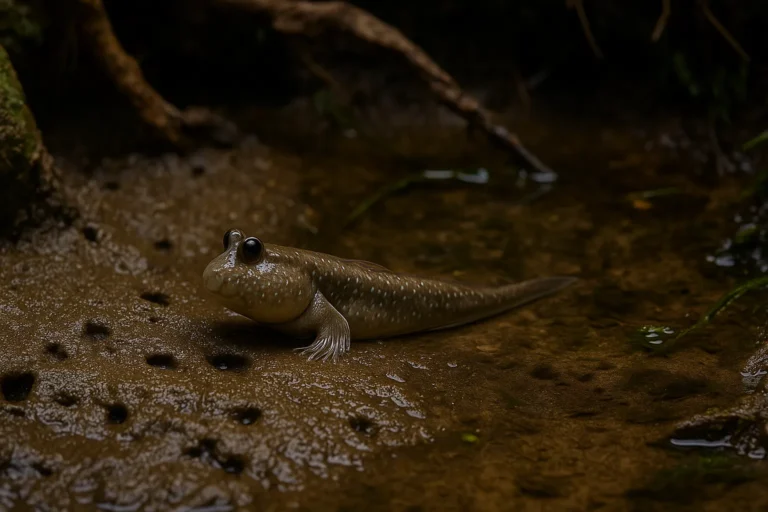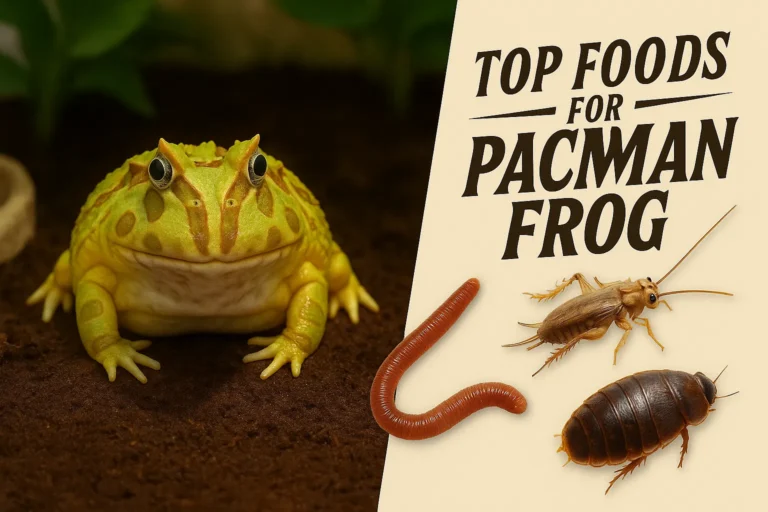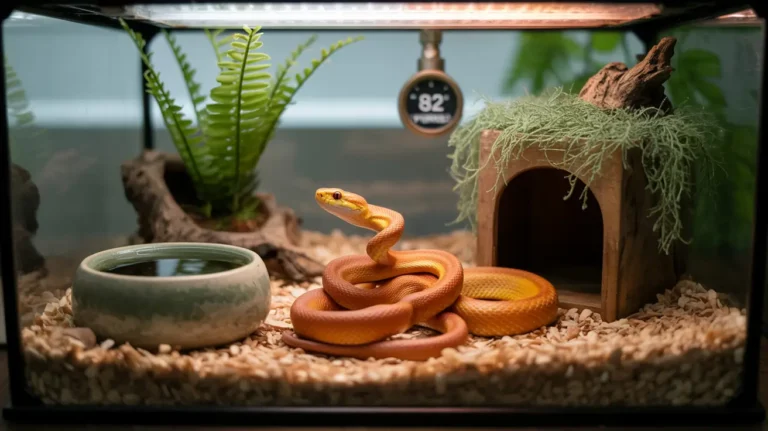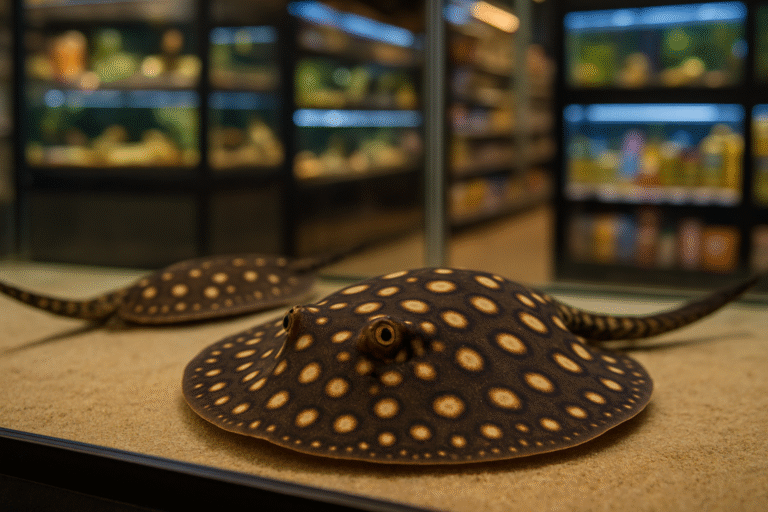Mudskipper Diet: What These Amphibious Fish Really Eat
Mudskippers are fascinating creatures that blur the line between fish and amphibian life. Their unique lifestyle, which includes walking on land and breathing through their skin, also influences their dietary habits in remarkable ways. Understanding what mudskippers eat is essential for anyone studying their ecology or keeping them in captivity. Let’s take a deep dive into their diet and feeding behavior.
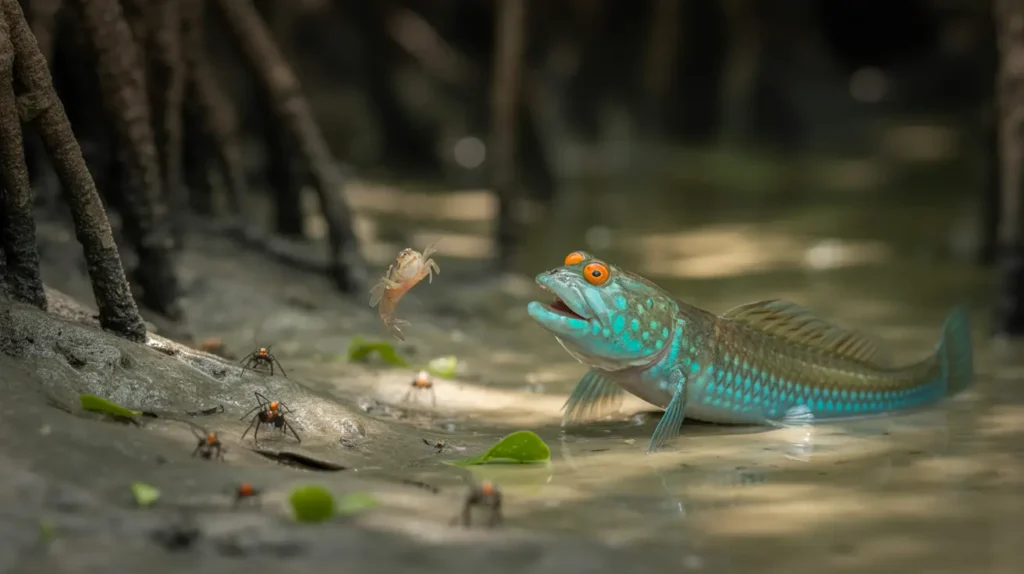
What Do Mudskippers Eat in the Wild?
In their natural habitat—mudflats, mangroves, and brackish wetlands—mudskippers are opportunistic feeders. They feed both in water and on land, depending on availability and conditions.
- Carnivorous Tendencies: Most mudskippers are carnivorous and feed on small invertebrates such as insects, larvae, small crustaceans (like crabs and shrimp), and worms.
- Occasional Herbivory: While meat-based food is their primary diet, some species are known to nibble on algae and detritus—especially when meat is scarce.
- Surface Grazing: Mudskippers often graze on the muddy surface, picking at microscopic organisms and organic matter using their specially adapted mouths.
How Mudskippers Catch Their Food
Their hunting technique is another fascinating aspect of their diet.
- On Land: Mudskippers use a combination of visual cues and quick hops to snatch prey on the surface. Their excellent vision and strong pectoral fins help them chase down insects.
- In Water: In shallow puddles or tidal pools, they forage by sucking in small prey with their mouths.
- Mouth Mechanics: Unlike most fish, mudskippers can project their tongue-like mouthparts outward to grab food, an adaptation ideal for land feeding.
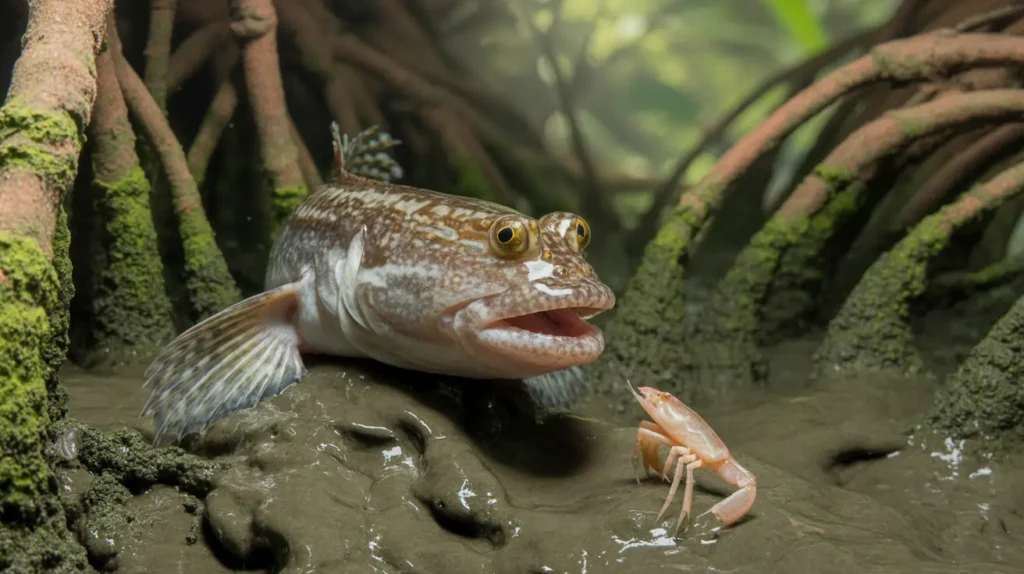
Feeding Behavior in Captivity
Feeding mudskippers in captivity requires mimicking their natural diet as closely as possible.
- Live Foods: Offer small live insects (like crickets), bloodworms, brine shrimp, and other small crustaceans. This keeps them active and encourages natural hunting behavior.
- Frozen & Dried Options: These can be used as supplements, but should not replace live food entirely.
- Feeding Frequency: Young mudskippers should be fed daily, while adults can be fed 3–5 times a week, depending on activity levels and size.
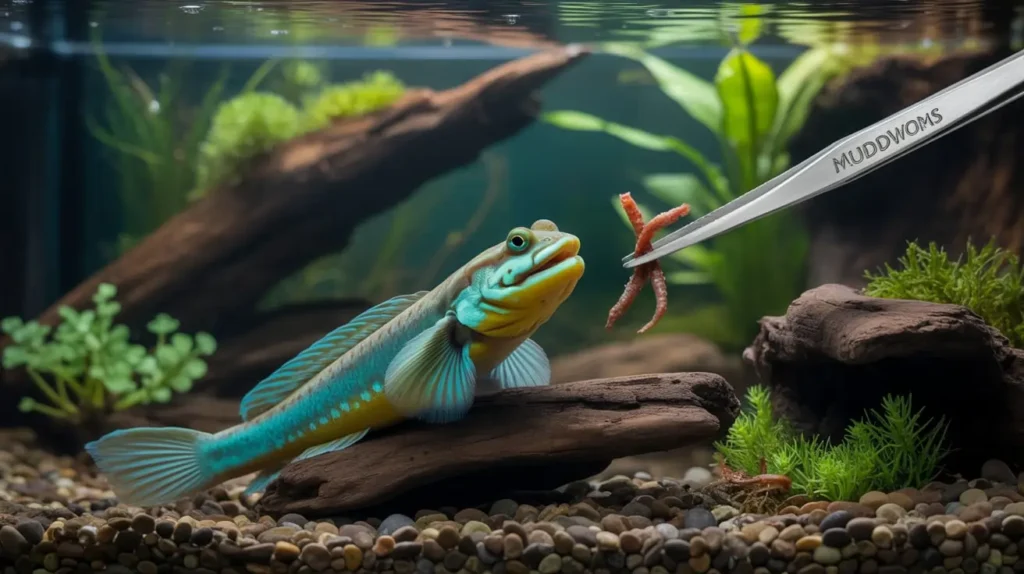
Mudskipper Diet Composition: Comparative Table
Here’s a breakdown of the common food items mudskippers eat, along with their nutritional benefits and how often they should be offered in captivity:
| Food Item | Type | Nutritional Value | Feeding Frequency | Captive Suitability |
|---|---|---|---|---|
| Bloodworms | Protein-rich | High in protein, low fat | 2–3x per week | ✅ Excellent choice |
| Brine Shrimp | Protein | High in omega-3s | 2–3x per week | ✅ Excellent choice |
| Crickets | Insect | Rich in protein & fiber | 2–4x per week | ✅ Encourages hunting |
| Algae | Plant matter | Contains vitamins & fiber | Occasionally | ⚠️ Limited use only |
| Detritus | Organic waste | Minimal nutrients | Naturally consumed | ❌ Not needed in captivity |
| Worms (e.g., tubifex) | Invertebrate | Protein & fat | 1–2x per week | ✅ High in energy |
Nutritional Considerations
Maintaining a balanced diet is important to ensure health and longevity, especially in captivity.
- Protein-Rich Foods: Essential for growth and energy, especially for younger or more active mudskippers.
- Calcium & Vitamins: Dusting live food with supplements can prevent deficiencies.
- Avoid Overfeeding: These fish have small stomachs. Overfeeding can lead to obesity and poor water quality.
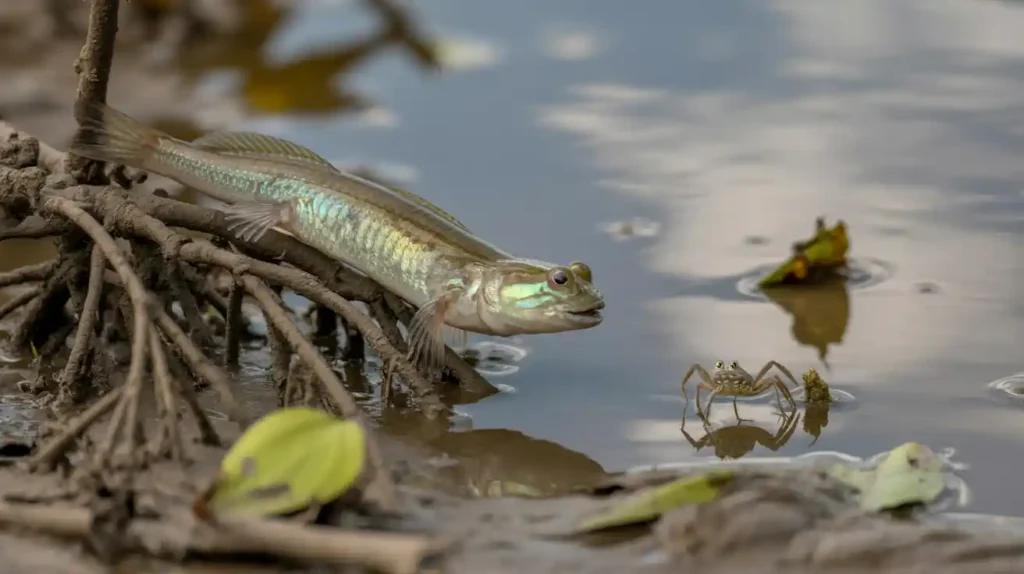
Common Feeding Mistakes to Avoid
- Using Only Dry Food: This deprives them of enrichment and essential nutrients.
- Feeding Large Prey: Mudskippers have small mouths, and oversized food can lead to choking or digestive issues.
- Ignoring Water Quality: Leftover food can rot quickly in warm, brackish environments—clean uneaten food regularly.
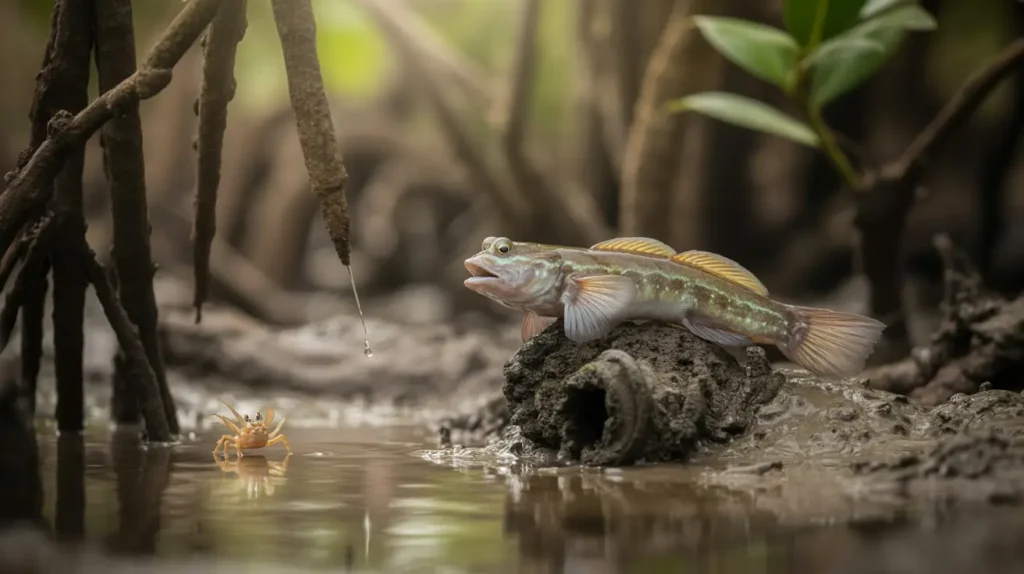
Final Thoughts
Mudskippers have evolved a fascinating and adaptable feeding style that suits their unique lifestyle on land and in water. Whether in the wild or captivity, their diet must be protein-rich and varied to meet their nutritional needs. Understanding their natural feeding behavior not only supports their health but also offers a glimpse into how evolution has shaped these extraordinary amphibious fish.

